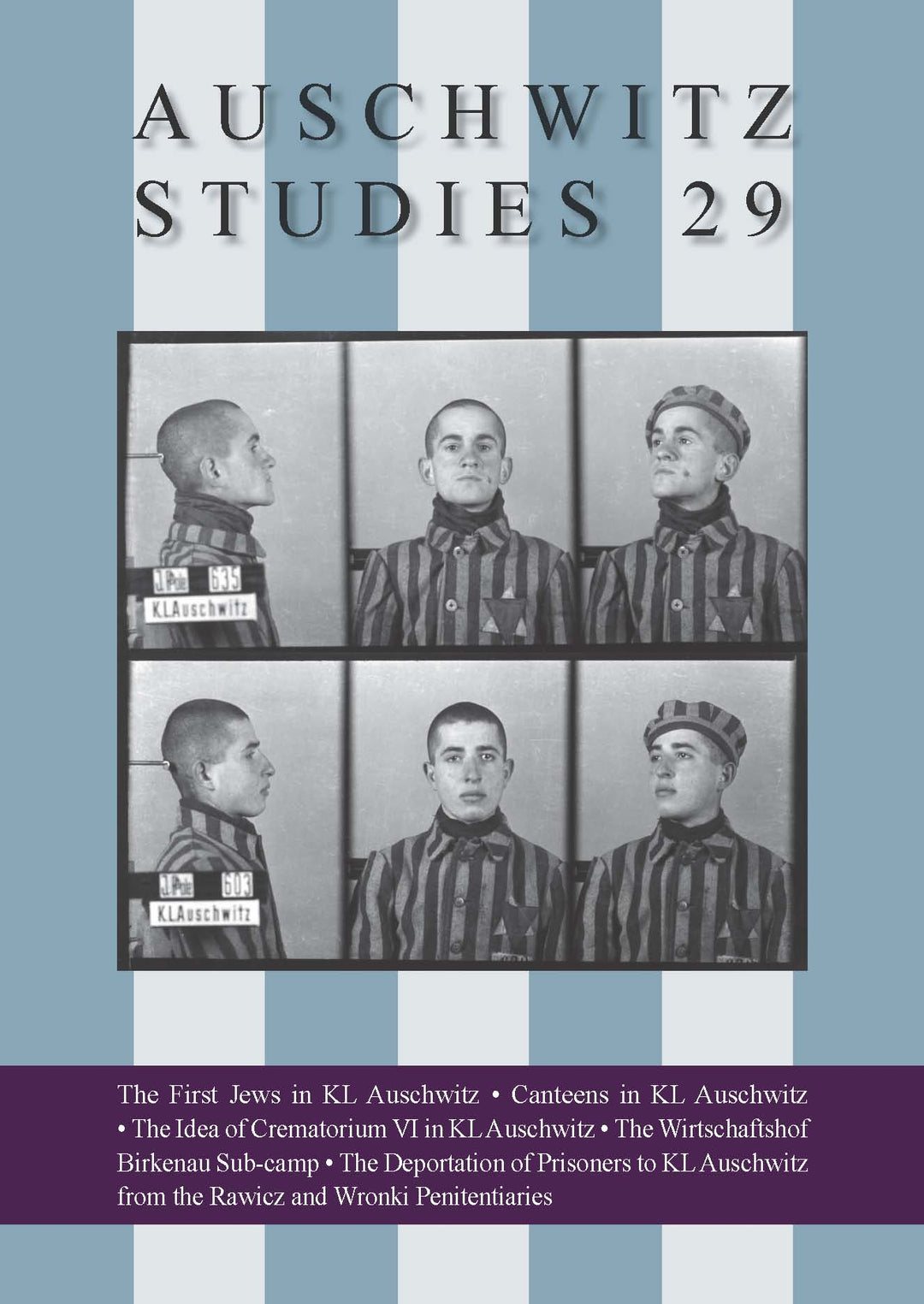
Auschwitz Studies 29
- En stock
- En rupture de stock, expédition prochainement
Discounts do not apply to this item.
The most recent, 29th issue of “Auschwitz Studies” contains a number of engaging articles on various subjects related to the operation of the Auschwitz camp. The lead article penned by Piotr Setkiewicz, head of the Museum Research Centre, is devoted to the fate of Jews in the camp during the first two years of its operation, i.e. in the period before the commencement of mass extermination in Auschwitz.
In line with the thorough studies carried out by the author, already at that time the Jews were treated particularly brutally; they were assigned to the worst work commando units, persecuted and murdered brutally, in effect of which the percentage of the ones who survived the initial period is slight.
Among the proposed texts, attention is attracted by Igor Bartosik’s study devoted to the genesis of the concept of VI crematorium in Auschwitz, a building that was never constructed and whose detailed plans developed by the German engineers flourished only on paper. The content of the preserved correspondence is a transfixing proof for the engagement of private German entrepreneurs shown during the improvement of mass extermination devices.
Łukasz Martyniak discusses the history of camp canteens, both the ones intended for SS-personnel and the camp prisoners. Martyniak managed to find places where these facilities were located, along with documents which show that German companies managing them drew significant profits from activities of this type. Based on meagre archival materials, Andrzej Strzelecki managed to reconstruct the history of the Wirtschaftshof Birkenau sub-camp, where approx. 200 prisoners performed agricultural and farming work for the needs of the camp.
The fragments of survivors’ accounts quoted in the article offer a picture of inhuman conditions in the sub-camp, permanent malnutrition of the prisoners and cruel treatment on the part of SS-men and foremen.
Bohdan Piętka tackled the subject of deportation of Poles from Reichsgau Wartheland to Auschwitz, analysing the fates of prisoners brought to the camp from penitentiary facilities in Rawicz and Wronki. Piętka uses this opportunity to discuss the Nazi penal legislation on lands incorporated into the Reich and the role that the local court prisons played in deportations from Reichsgau Wartheland.
The publication also contains reviews and discussions of literature items related to this issue.
Technical data
| ISBN | 2299-2499 |
| Year of publication | 2018 |
| Number of pages | 212 |
| Weight | 0.32 kg |
| Type of cover | softcover |
| Dimensions | 17 x 24 cm |

